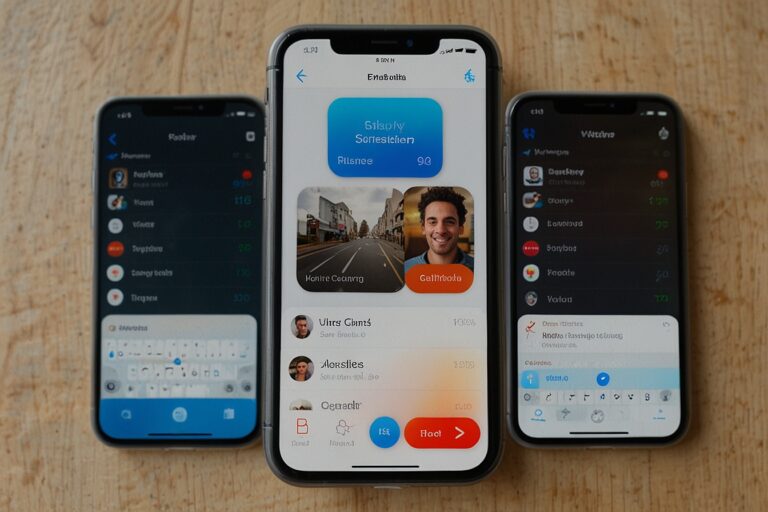
TL;DR
- Apple may use OpenAI and Anthropic models to upgrade Siri’s AI.
- Internal project “LLM Siri” is in development but reportedly delayed to 2026.
- Apple is testing cloud-based models from partners on its infrastructure.
- Siri already uses ChatGPT for tough queries as part of Apple Intelligence.
- Apple’s internal models are lagging behind Google, OpenAI, and Anthropic.
- The company is under pressure to catch up in the AI race.
- Bloomberg reports Apple faces technical setbacks with its in-house model.
- Potential deals may reshape AI integration across Apple devices.
Apple Shifts Strategy Toward Third-Party AI for Siri
Apple is reportedly considering a major shift in strategy by tapping OpenAI and Anthropic to power the next generation of Siri, according to Bloomberg (June 30, 2025). This comes as the company faces technical hurdles in delivering its in-house artificial intelligence model, part of a project known internally as “LLM Siri.”
Rather than rely exclusively on internal development, Apple is testing third-party large language models (LLMs) for integration into future Siri iterations. The move suggests Apple may take a hybrid approach, combining its own tools with external AI expertise.
Timeline Pushed: Siri’s AI Makeover Delayed to 2026
Apple originally planned to roll out a major Siri overhaul in 2025, supported by its proprietary AI engine. But according to Bloomberg’s report, the launch has been delayed until 2026 or later due to persistent engineering and infrastructure challenges.
This delay underlines the difficulty Apple has faced in matching the rapid development pace of leaders like Google DeepMind and OpenAI. Unlike competitors, Apple is relatively new to the cloud-native LLM space, which has become essential for running advanced AI workloads at scale.
Apple’s Position in the AI Landscape
| Metric or Development | Detail | Source |
| Siri AI Overhaul Timeline | Delayed to 2026+ | Bloomberg |
| Current AI Partners | OpenAI, Anthropic | Bloomberg |
| Internal Project Name | LLM Siri | Bloomberg |
| AI Model Hosting | Apple’s cloud infrastructure | Bloomberg |
| Existing Siri-ChatGPT Link | Integrated into Apple Intelligence | TechCrunch |
Apple’s AI Dilemma: Playing Catch-Up
Despite a commanding lead in hardware, Apple has been playing catch-up in AI, lagging behind Microsoft-backed OpenAI and Alphabet’s Google. The Cupertino tech giant’s approach has traditionally emphasized on-device computing and privacy, which limited its agility in the cloud-native AI boom.
By turning to external providers like OpenAI and Anthropic, Apple acknowledges the need to incorporate more mature and scalable models—at least in the short term. It’s unclear whether the company will seek exclusive licensing, joint training, or a fallback model integration strategy.
LLM Siri: Apple’s Internal Model Still in Play
Apple is continuing work on “LLM Siri,” an internal project aiming to build a fully Apple-owned AI model for Siri. Sources told Bloomberg that Apple has not shelved the project, but is evaluating alternatives while development continues.
The company has reportedly asked OpenAI and Anthropic to train versions of their models to run on Apple’s infrastructure—suggesting Apple intends to host and manage third-party models in a more secure and privacy-compliant environment than traditional public clouds.
This gives Apple more control over user data and model inference, aligning with its long-standing privacy commitments.
From App Integration to Deeper Embedding
Earlier in 2025, Apple revealed that Siri would integrate with ChatGPT via Apple Intelligence on iOS 18, iPadOS 18, and macOS Sequoia. The integration allows Siri to invoke ChatGPT when it cannot answer a complex question.
However, what’s reportedly under discussion now is a much deeper level of AI integration, where third-party models would power the core intelligence layer of Siri—marking a significant architectural shift for Apple’s flagship assistant.
Implications: Redefining Siri and the AI Ecosystem
The decision to outsource model training and inference, even partially, marks a paradigm shift in how Apple approaches its AI stack. If OpenAI or Anthropic becomes a default engine for Siri, it could influence Apple’s entire ecosystem, from voice interactions to productivity tools like Mail, Messages, and Safari.
It also brings up questions about model interoperability, licensing terms, data usage, and the potential for multiple AI engines depending on region, language, or device class.
With Google also ramping up its Gemini model integrations across Android and Pixel devices, Apple’s choice of model partner could heavily shape AI dynamics in consumer tech for the rest of the decade.
Outlook: The Road to AI Leadership Runs Through Collaboration
While Apple’s long-term plan may still include a fully proprietary AI model, its short-term pivot toward OpenAI and Anthropic signals a pragmatic willingness to collaborate. These partnerships could allow Apple to close the AI gap more quickly and meet growing user expectations for a smarter Siri.Whether this hybrid model strategy remains temporary or becomes permanent will likely depend on how quickly Apple can get its internal “LLM Siri” project on par with what Anthropic’s Claude or OpenAI’s GPT-4 can offer today.




